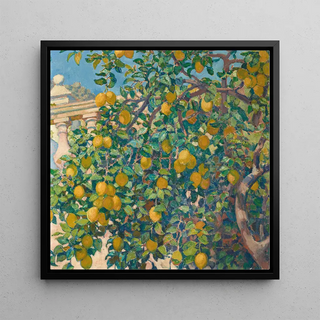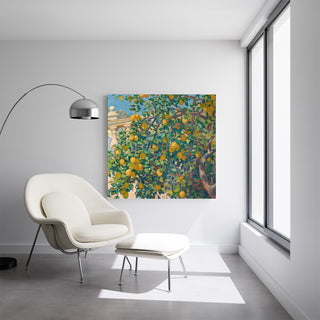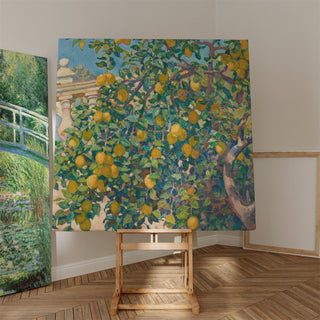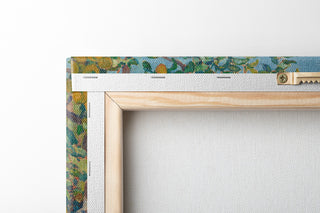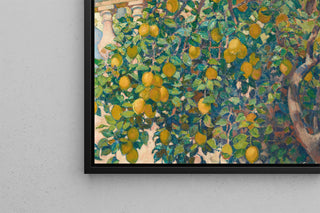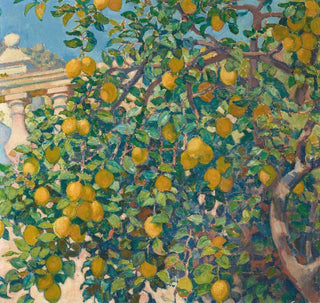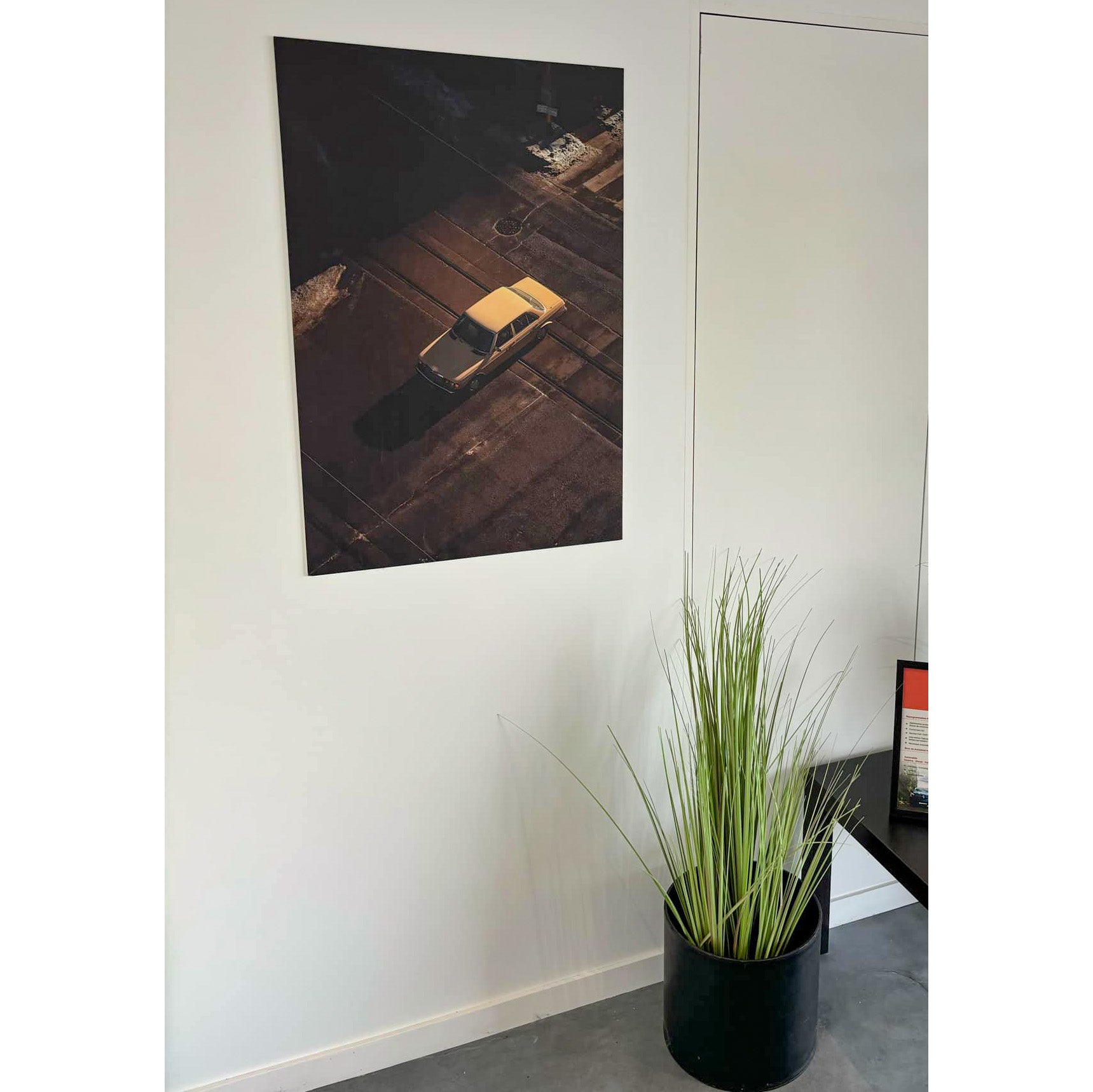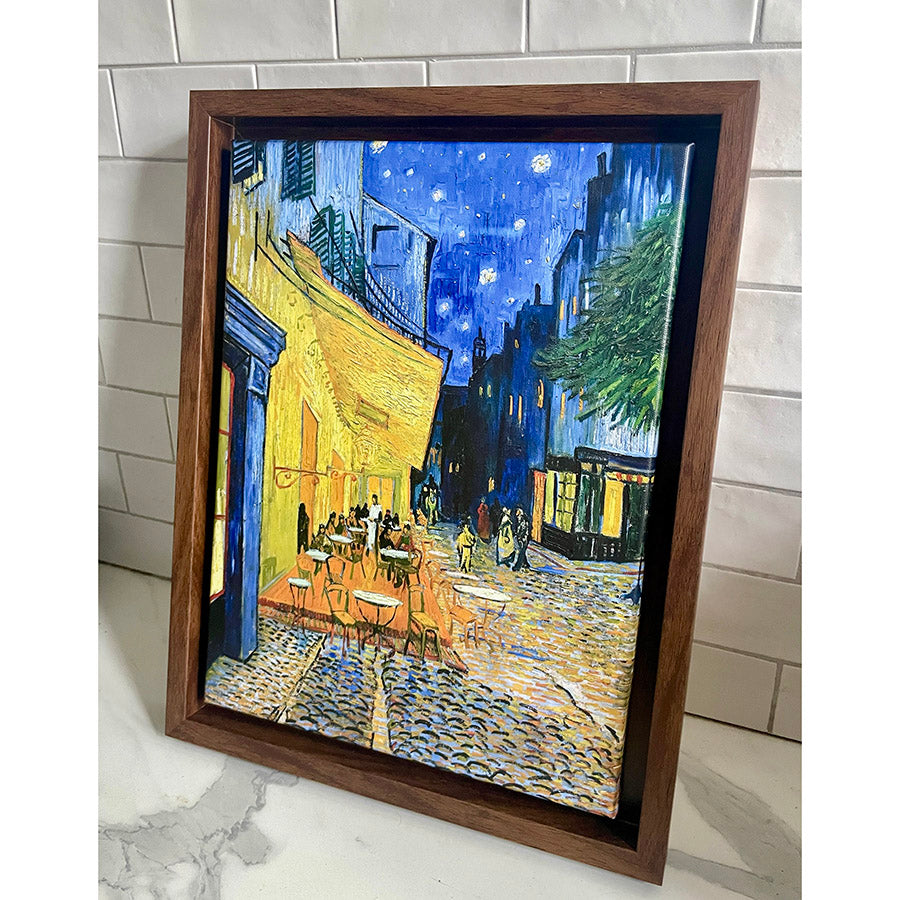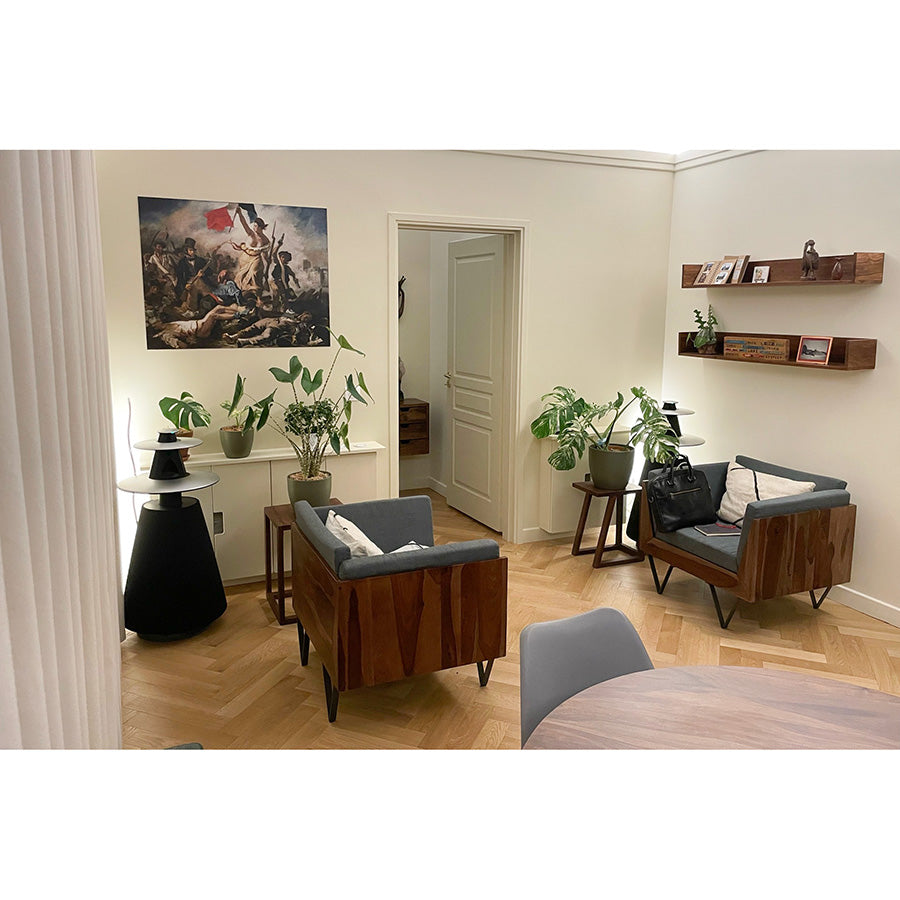Art print | Lemon trees at La Mortola - Theo van Rysselberghe

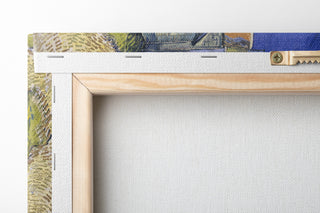
View from behind
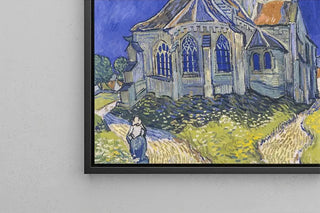
Frame (optional)
Lemon trees bathed in light: the Mediterranean brilliance of Lemon Trees at La Mortola
In Lemon Trees at La Mortola, Theo van Rysselberghe makes a garden scene vibrate where light caresses the leaves and fruits. The composition plays on cut-out plant masses and contrasts of deep greens and luminous yellows, rendered with precise and rhythmic brushstrokes. The atmosphere breathes the gentle warmth of the coast, blending intimacy and sensory freshness: one perceives the light rustling of foliage and the fleshy texture of the lemons. The balance between detail and chromatic synthesis gives the work an elegant serenity, ideal for enriching a contemporary or classic interior.
Theo van Rysselberghe, master of Belgian Neo-Impressionism
Theo van Rysselberghe (1862–1926) establishes himself as a central figure of Neo-Impressionism and Pointillism in Belgium. Influenced by Seurat and research on light and color, he develops a pictorial language based on tone division and precise brushwork, while maintaining sensitivity to composition and landscape intimacy. His works blend chromatic rigor and domestic poetry, with series exploring gardens, portraits, and Mediterranean scenes. Van Rysselberghe's ability to unite optical science and pictorial emotion marked the evolution of European painting at the turn of the 19th and 20th centuries.
A decorative acquisition with multiple assets
The art print of Lemon Trees at La Mortola brings a luminous and refined presence to any living space. Ideal above a sofa, in an office, or a bedroom, this version faithfully reproduces the nuances and original structure, offering an art print of Lemon Trees at La Mortola that respects the chromatic choices and the artist's characteristic touch. Such artworks create a calming and cultivated focal point, capable of harmonizing a neutral palette or accentuating colorful highlights. For art enthusiasts, the art print of Lemon Trees at La Mortola is a wise compromise between visual authenticity and decorative accessibility.

Matte finish

View from behind

Frame (optional)
Lemon trees bathed in light: the Mediterranean brilliance of Lemon Trees at La Mortola
In Lemon Trees at La Mortola, Theo van Rysselberghe makes a garden scene vibrate where light caresses the leaves and fruits. The composition plays on cut-out plant masses and contrasts of deep greens and luminous yellows, rendered with precise and rhythmic brushstrokes. The atmosphere breathes the gentle warmth of the coast, blending intimacy and sensory freshness: one perceives the light rustling of foliage and the fleshy texture of the lemons. The balance between detail and chromatic synthesis gives the work an elegant serenity, ideal for enriching a contemporary or classic interior.
Theo van Rysselberghe, master of Belgian Neo-Impressionism
Theo van Rysselberghe (1862–1926) establishes himself as a central figure of Neo-Impressionism and Pointillism in Belgium. Influenced by Seurat and research on light and color, he develops a pictorial language based on tone division and precise brushwork, while maintaining sensitivity to composition and landscape intimacy. His works blend chromatic rigor and domestic poetry, with series exploring gardens, portraits, and Mediterranean scenes. Van Rysselberghe's ability to unite optical science and pictorial emotion marked the evolution of European painting at the turn of the 19th and 20th centuries.
A decorative acquisition with multiple assets
The art print of Lemon Trees at La Mortola brings a luminous and refined presence to any living space. Ideal above a sofa, in an office, or a bedroom, this version faithfully reproduces the nuances and original structure, offering an art print of Lemon Trees at La Mortola that respects the chromatic choices and the artist's characteristic touch. Such artworks create a calming and cultivated focal point, capable of harmonizing a neutral palette or accentuating colorful highlights. For art enthusiasts, the art print of Lemon Trees at La Mortola is a wise compromise between visual authenticity and decorative accessibility.

